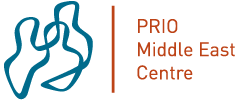This paper investigates the extent to which inequalities between and within regional groups in developing countries affect the risk of civil conflict onsets. A positive link between horizontal inequalities (inequalities between identity groups) and civil conflict has been established by some preliminary empirical studies (e.g. Østby 2005), but no systematic large-N study has to date investigated whether inequalities within groups may affect this relationship. Whereas inter-group inequalities are believed to contribute to the risk of conflict because of group grievances, the level of inequalities within groups may curb mobilization due to reduced group cohesiveness and leaders’ preferences. If this is true, the most conflict-prone combination should be strong inter-group inequalities and weak intra-group inequalities. I assess such arguments by using Demographic and Health Surveys (DHS) from 61 developing countries in the period 1986–2003 to decompose measures of welfare inequalities within regions as well as between them, based on indicators such as household assets, and educational opportunities. Some of the inter-group measures show a strong positive effect on conflict outbreak, but I find no evidence for a negative effect of intra-regional inequalities. Neither do my results uncover any significant relationship between Zhang & Kanbur’s (2001) alternative measure of polarization and conflict. Finally, I disaggregate the dependent variable exploring the impact of regional inequalities with regard to territorial and governmental internal conflicts. The results indicate that regional inequalities in terms of household assets and education have a stronger impact on territorial conflicts.
Østby, Gudrun (2005) Disaggregated Inequalities and Conflict in Developing Countries, presented at the Polarization and Conflict (PAC) Summer Meeting, 2–5 June.






